Sand Creek Massacre National Historic Site
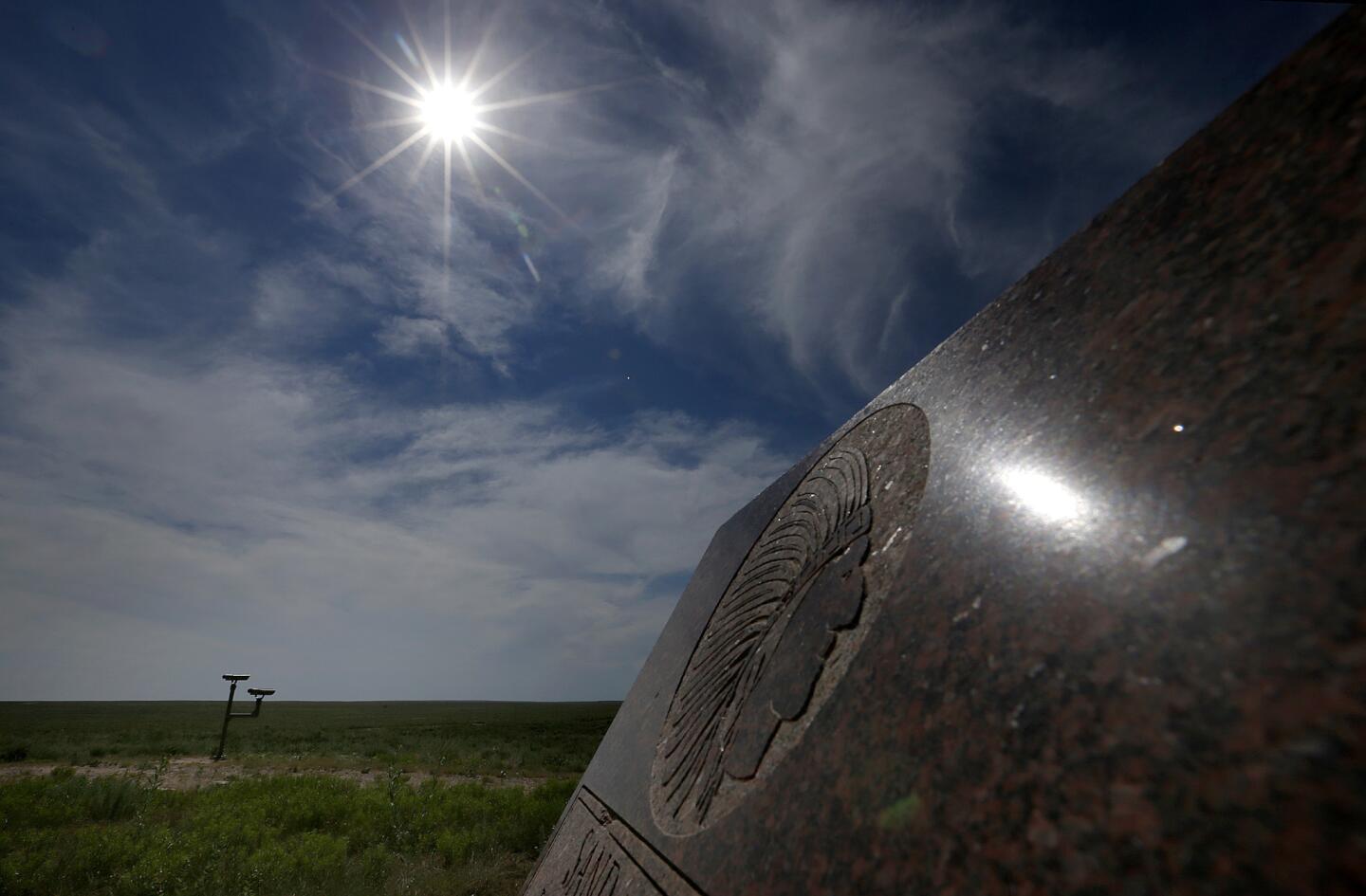
A knee-high memorial marks the Sand Creek Massacre National Historic Site near Eads, Colo.
(Allen J. Schaben / Los Angeles Times)In 1864, federal soldiers stormed a peaceful camp of Cheyenne and Arapaho at Sand Creek, killing more than 200. The National Park Service manages 412 sites, and not one tells a story as dark as Colorado’s Sand Creek Massacre National Historic Site.
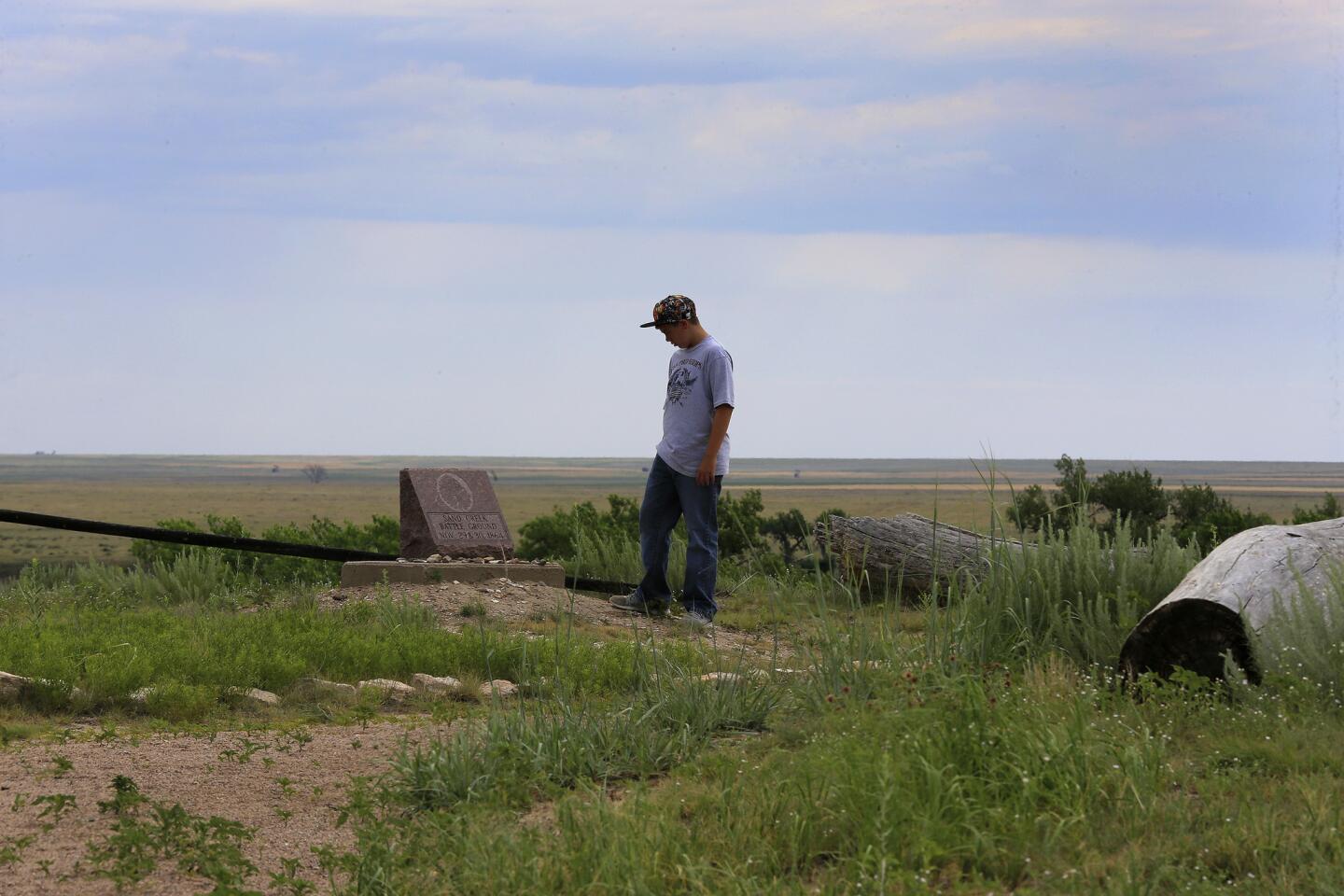
A student pauses while viewing the area.
(Allen J. Schaben / Los Angeles Times)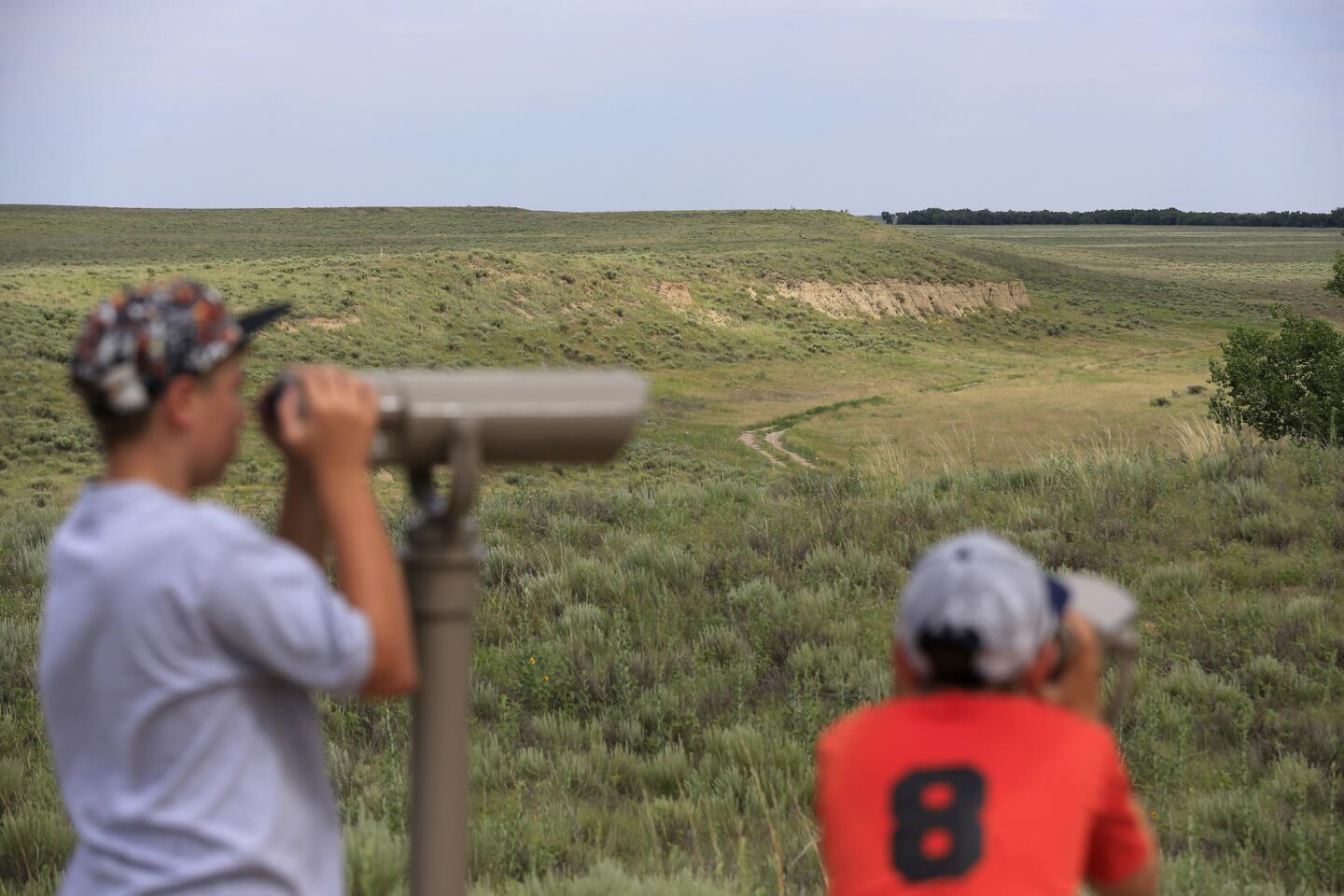
Students use viewing telescopes to see the area where the massacre took place.
(Allen J. Schaben / Los Angeles Times)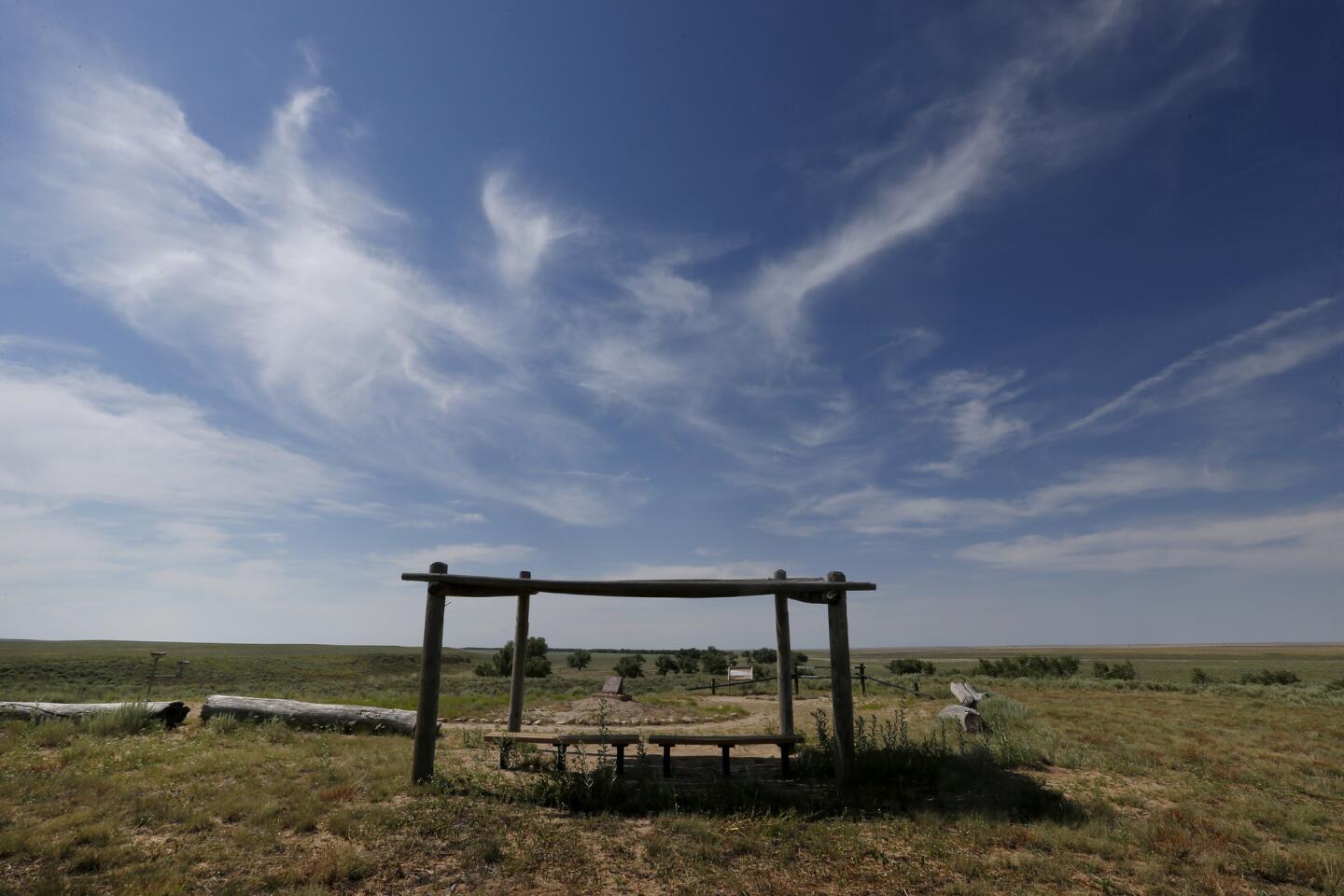
The viewing area.
(Allen J. Schaben / Los Angeles Times)Advertisement
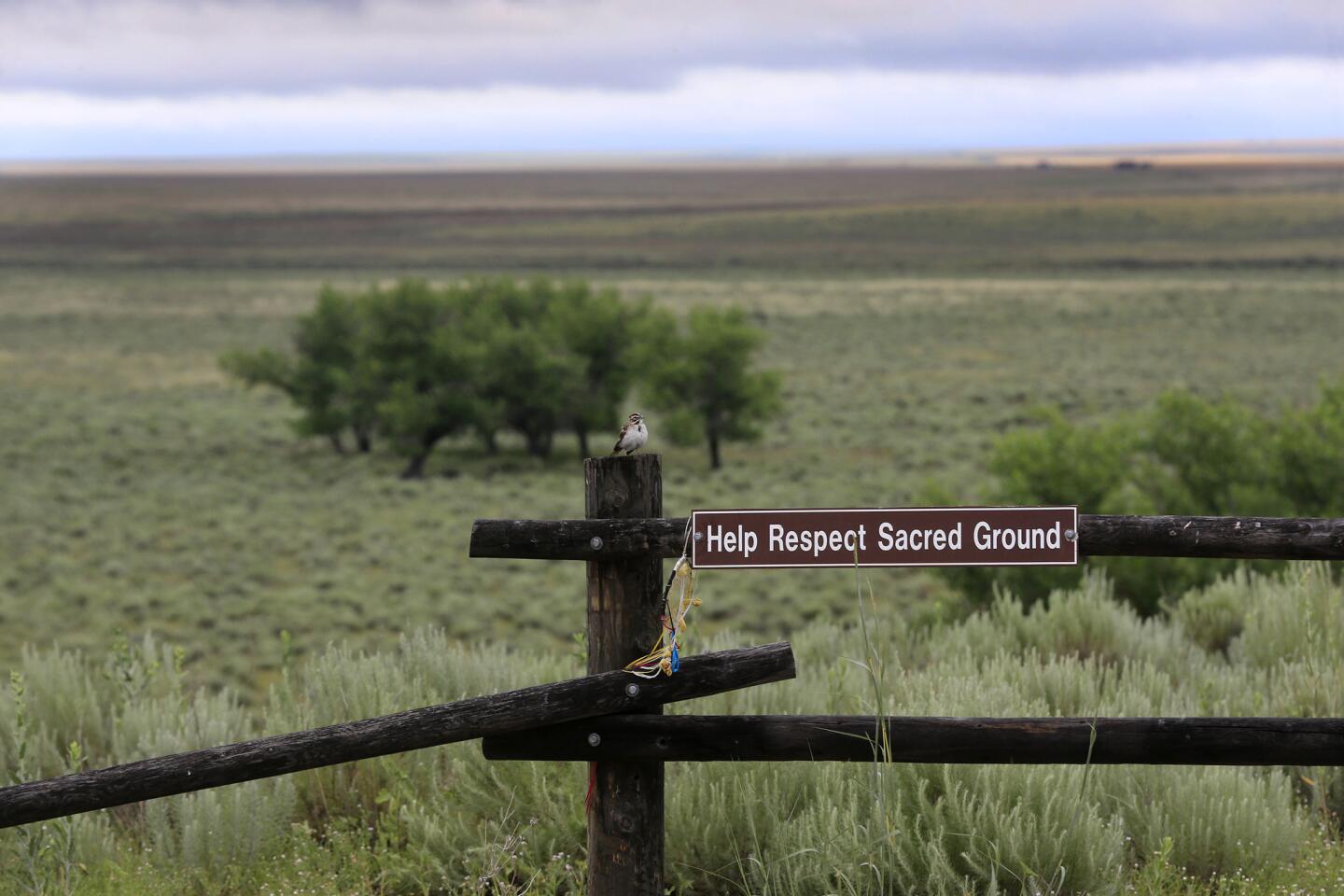
A bird rests on a fence overlooking the area reserved as sacred ground.
(Allen J. Schaben / Los Angeles Times)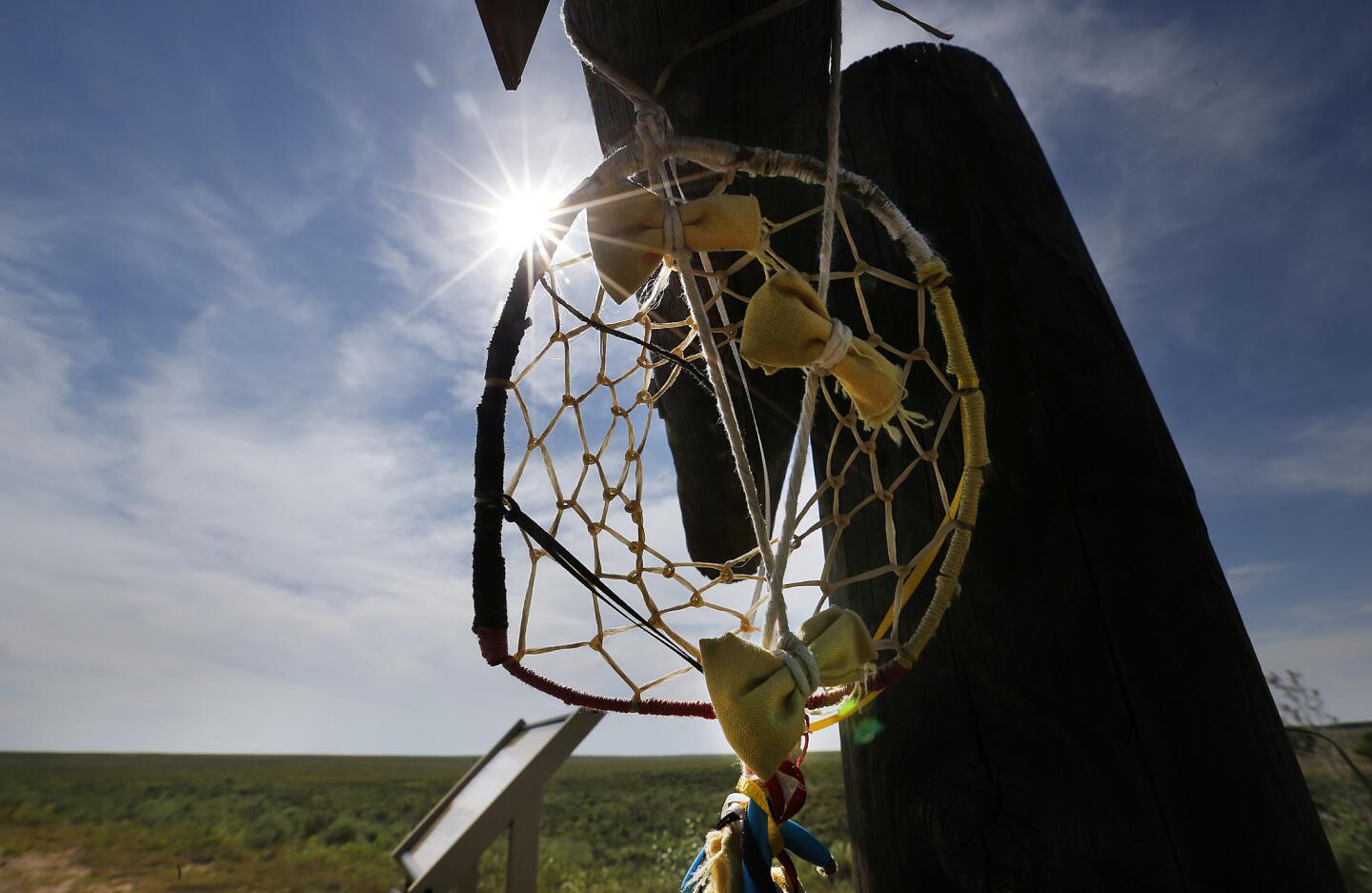
A Native American dream catcher is left on a fence post overlooking the Sand Creek Massacre National Historic Site.
(Allen J. Schaben / Los Angeles Times)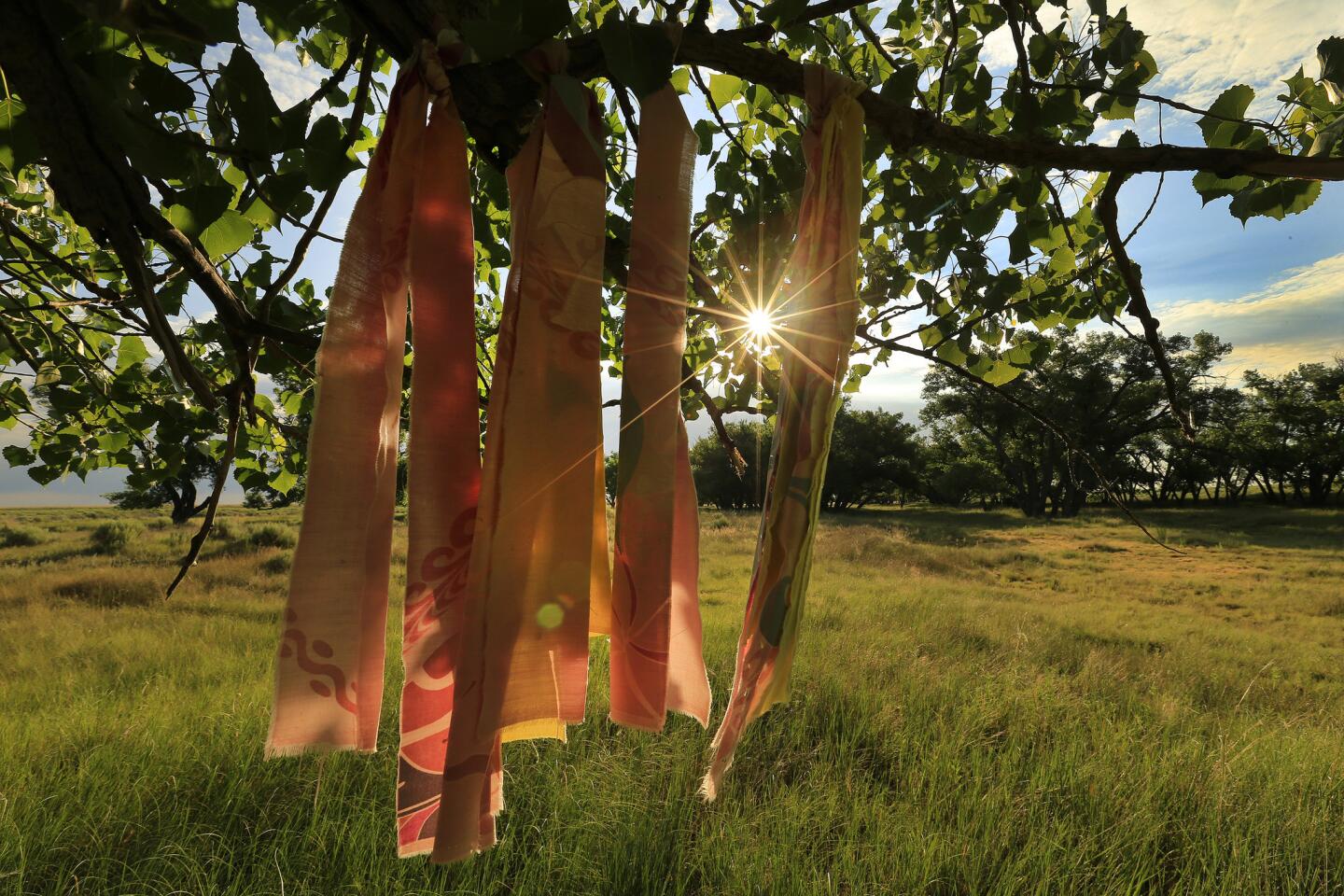
Prayer flags hang from a tree at sunrise.
(Allen J. Schaben / Los Angeles Times)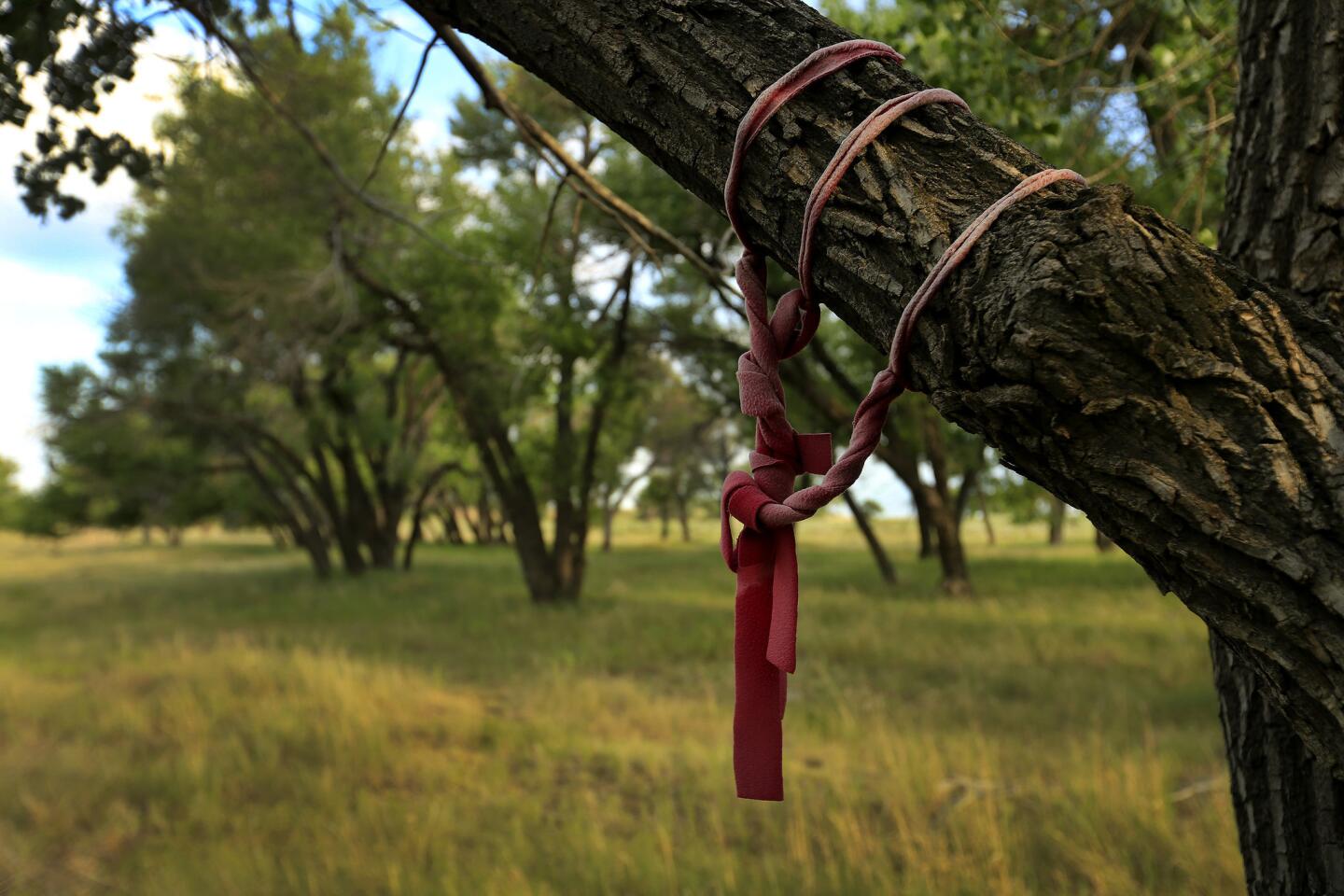
A Native American prayer flag hangs from a tree. (Allen J. Schaben / Los Angeles Times)
Advertisement
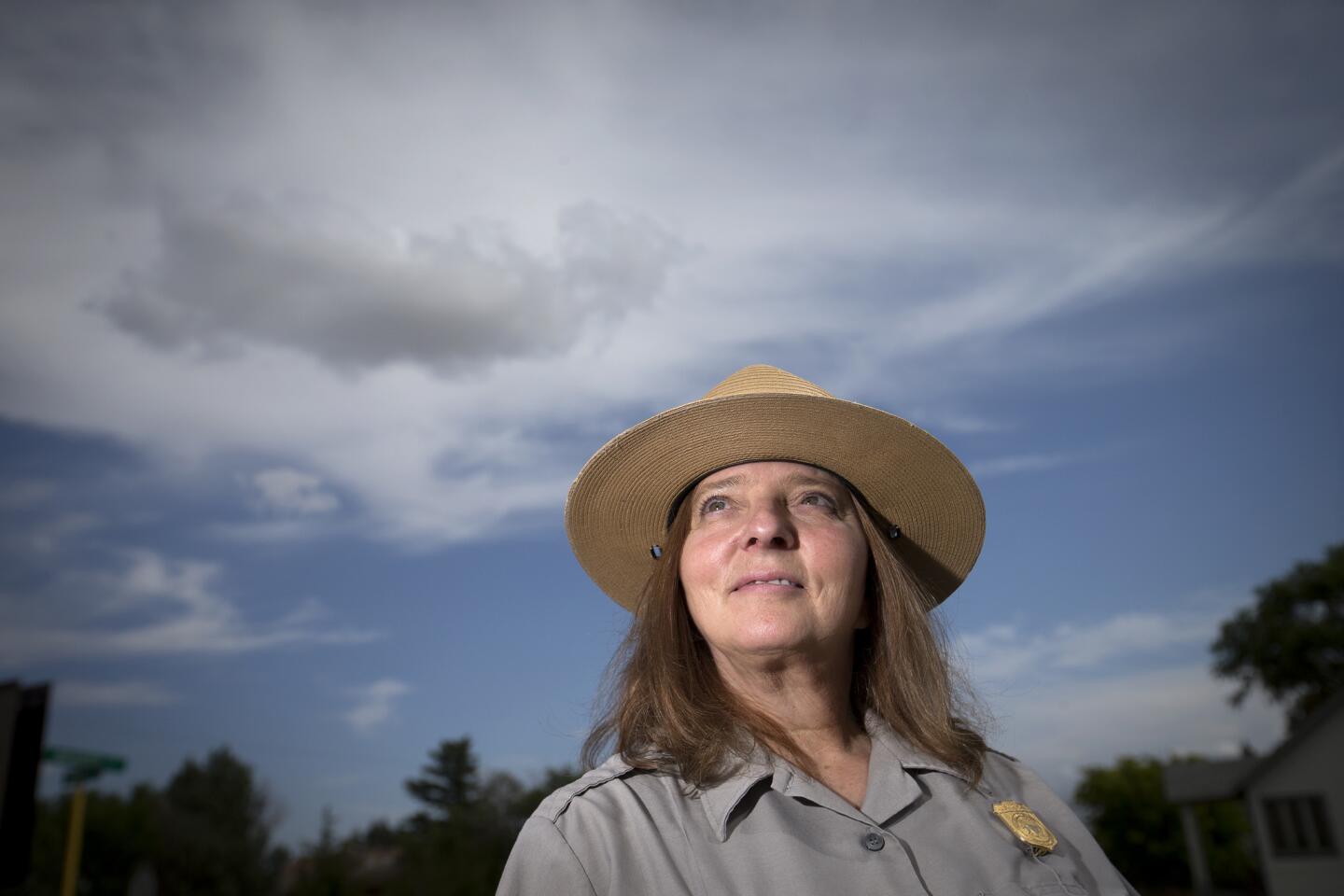
Alexa Roberts is the superintendent of Sand Creek Massacre National Historic Site. “At first,” she says, “we spent our time wondering how to talk about it. Now we’re talking about it.”
(Allen J. Schaben / Los Angeles Times)
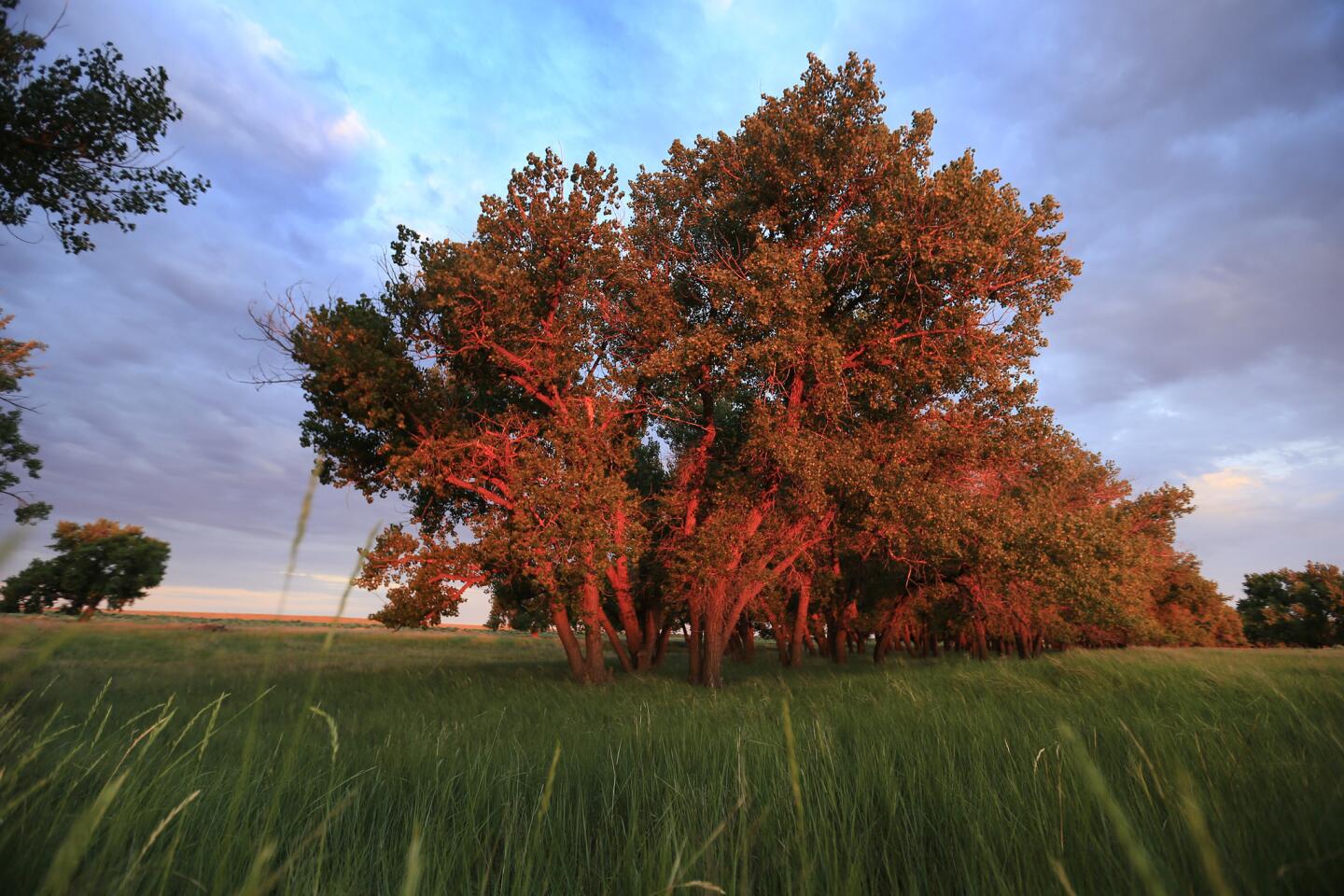
Trees glow red at sunrise.
(Allen J. Schaben / Los Angeles Times)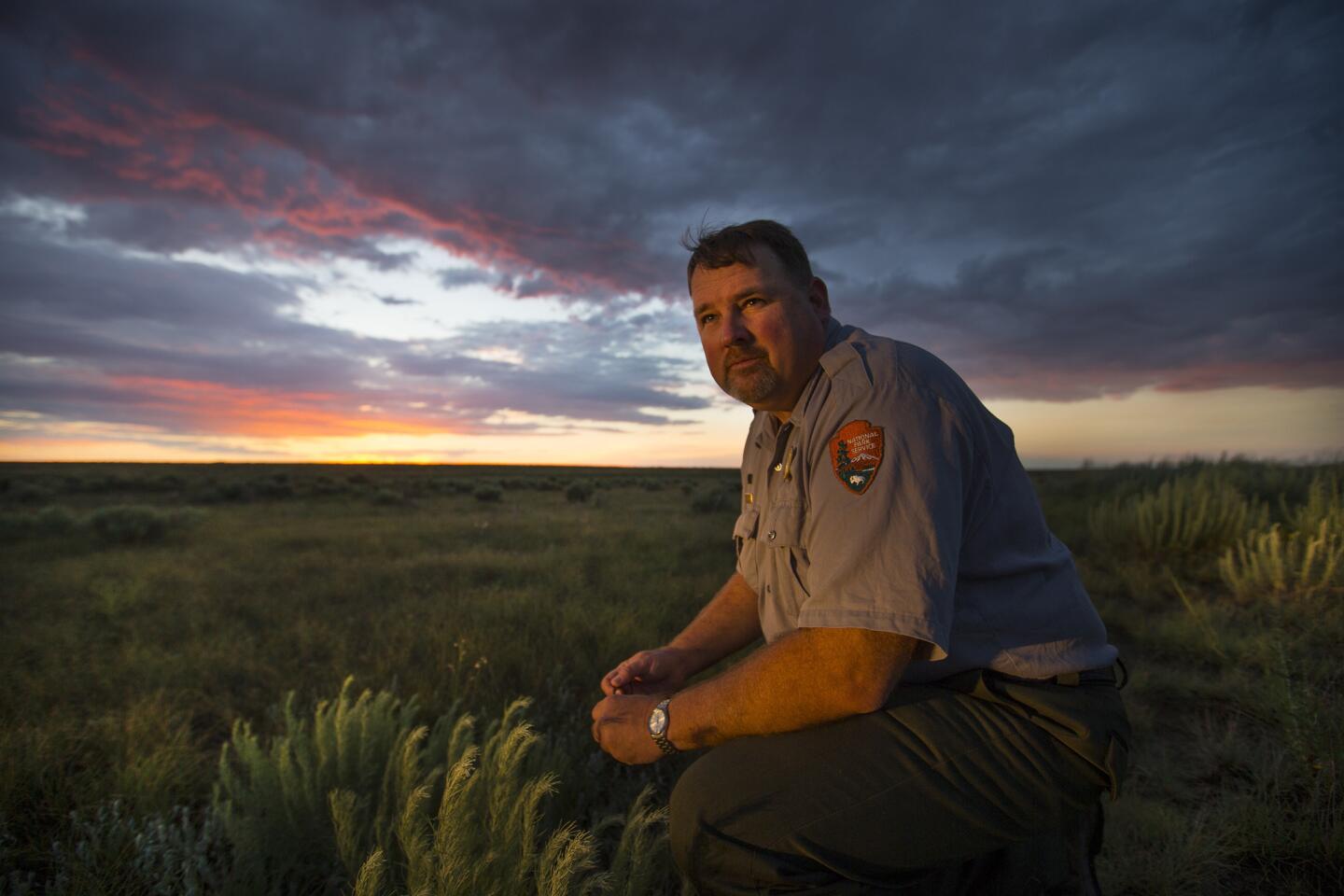
Shawn Gillette, chief of interpretation at Sand Creek Massacre National Historic Site, kneels in the grass where the massacre happened. (Allen J. Schaben / Los Angeles Times)
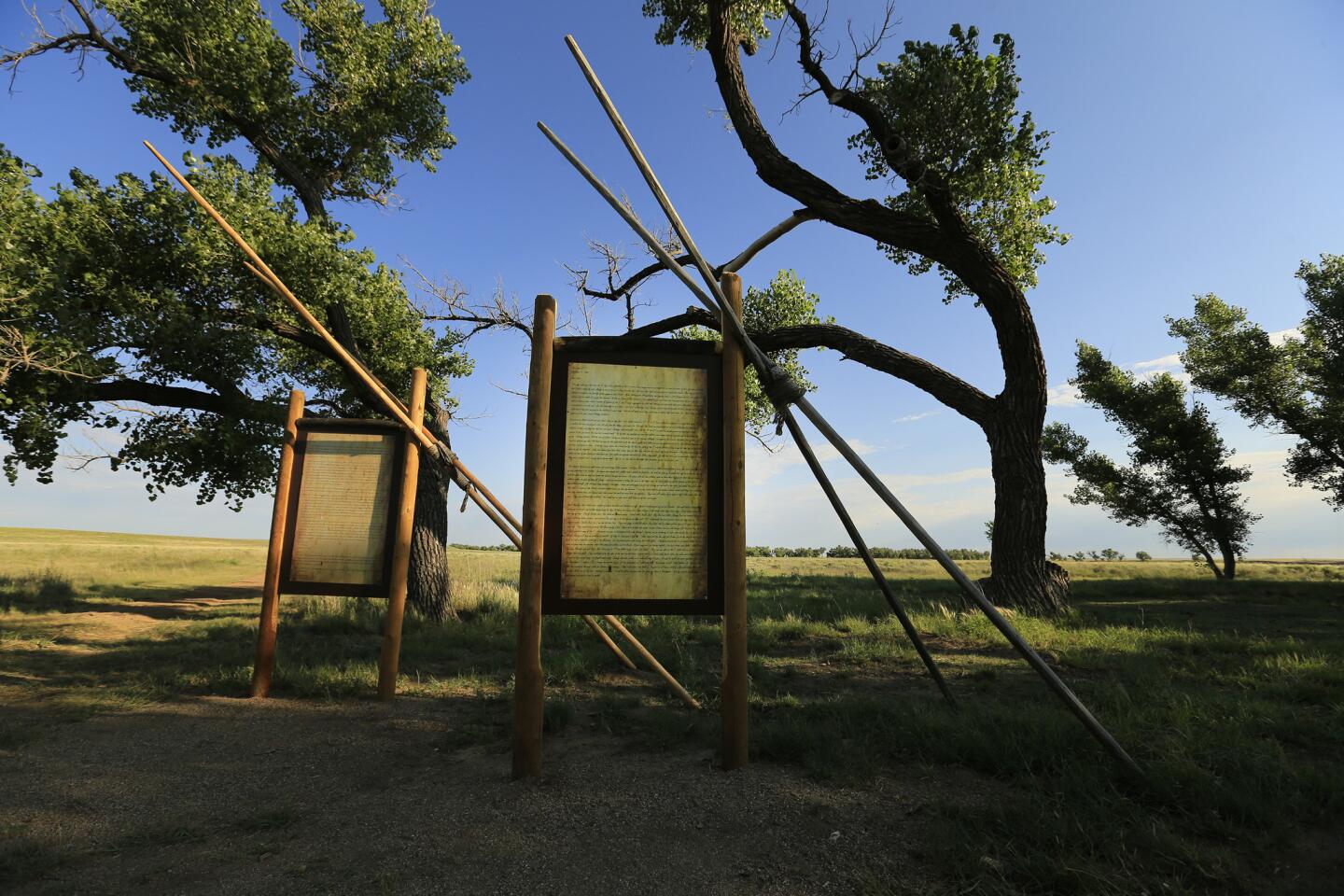
The park displays letters written by witnesses of the massacre.
(Allen J. Schaben / Los Angeles Times)Advertisement
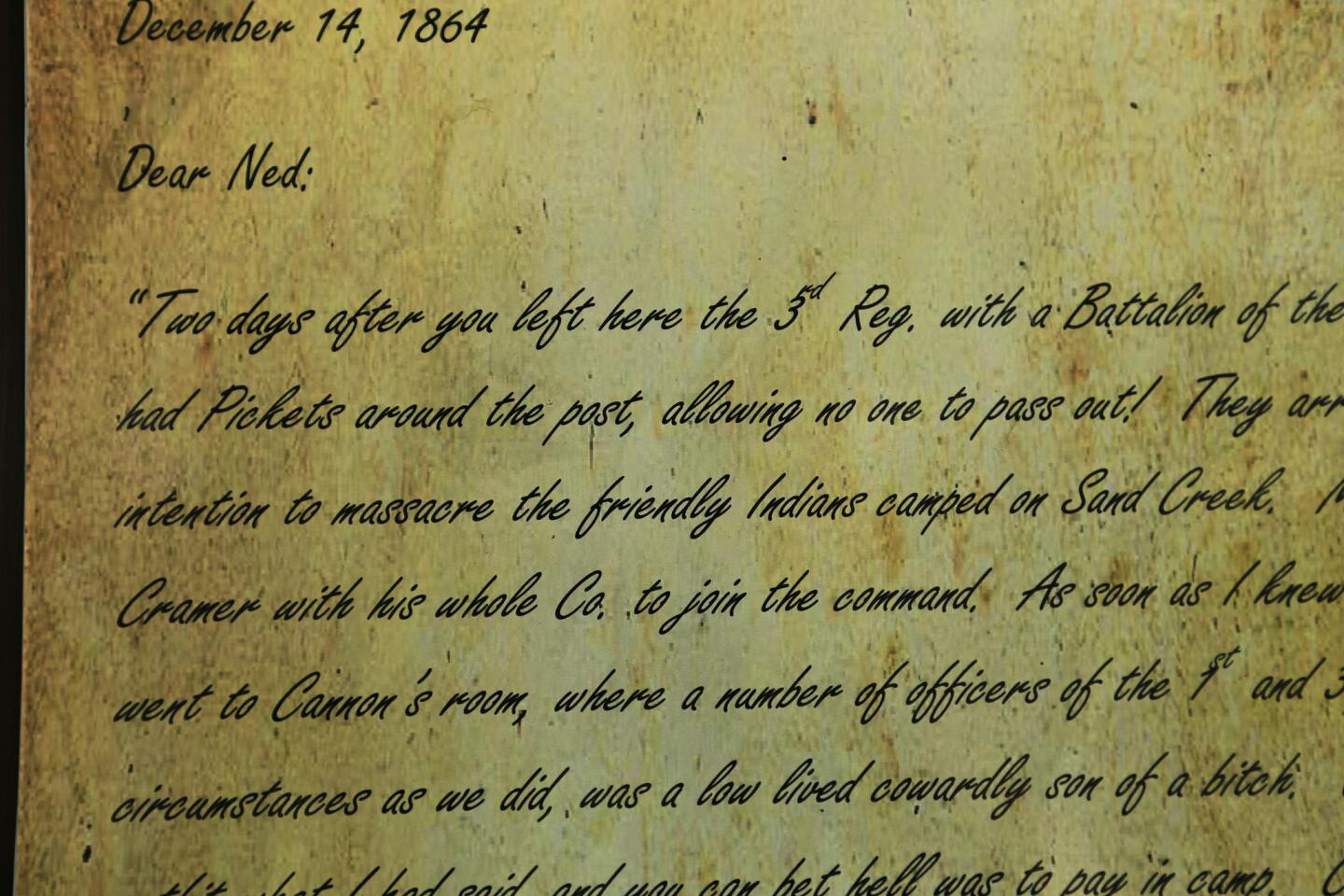
A detail of a letter written by a witness.
(Allen J. Schaben / Los Angeles Times)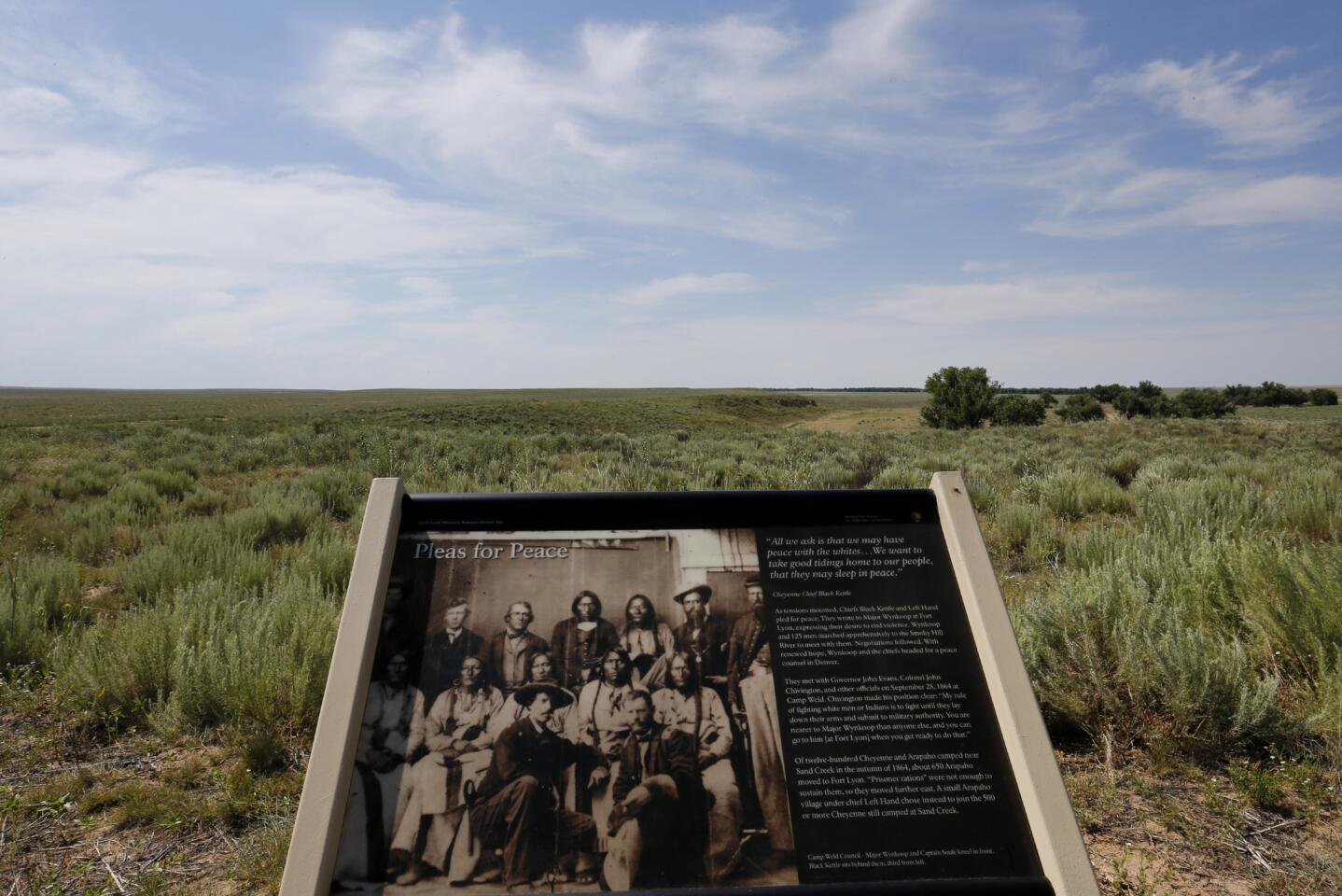
A historical sign with the title “Pleas for Peace” stands at the site.
(Allen J. Schaben / Los Angeles Times)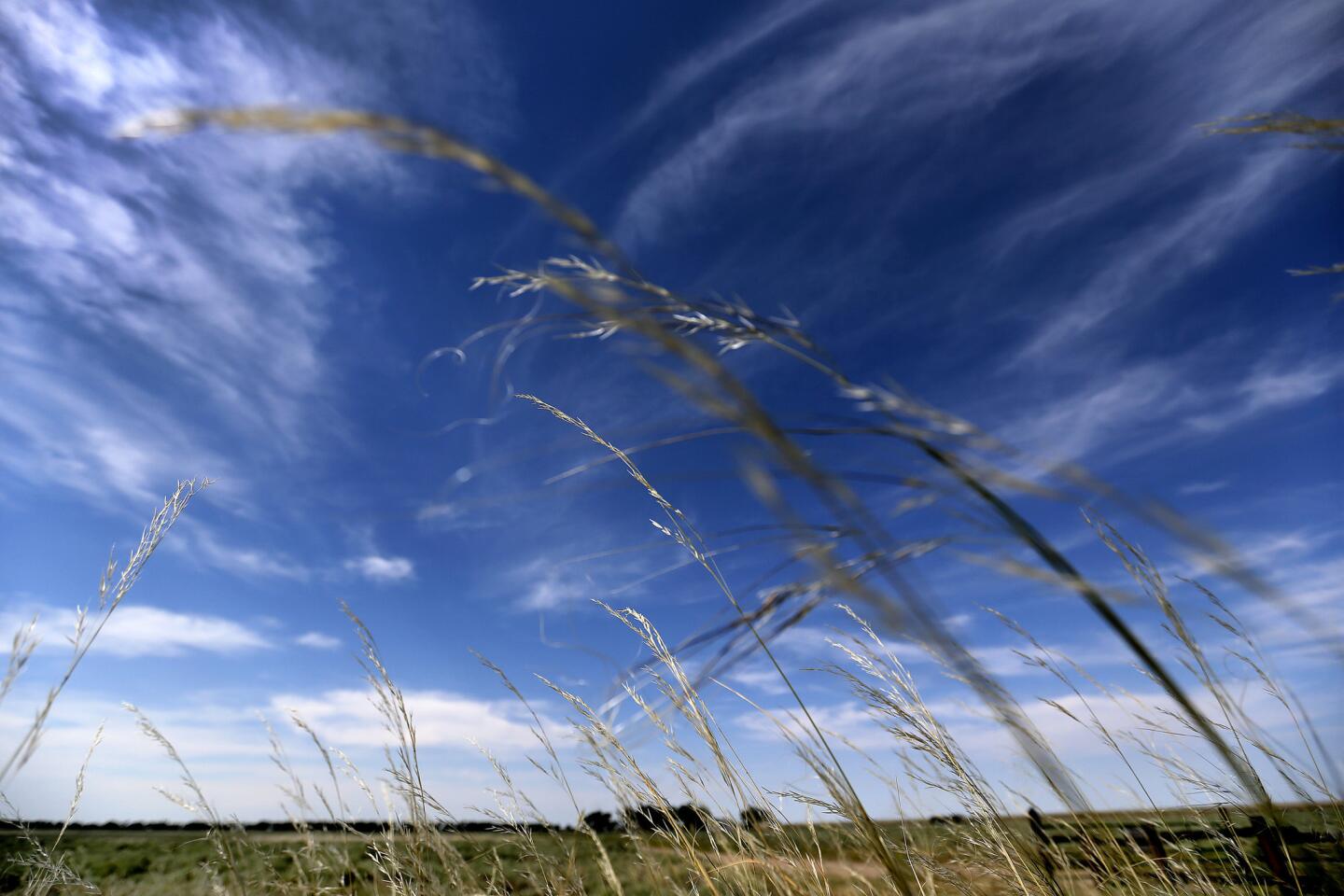
Wispy clouds and tall grass blows in the wind.
(Allen J. Schaben / Los Angeles Times)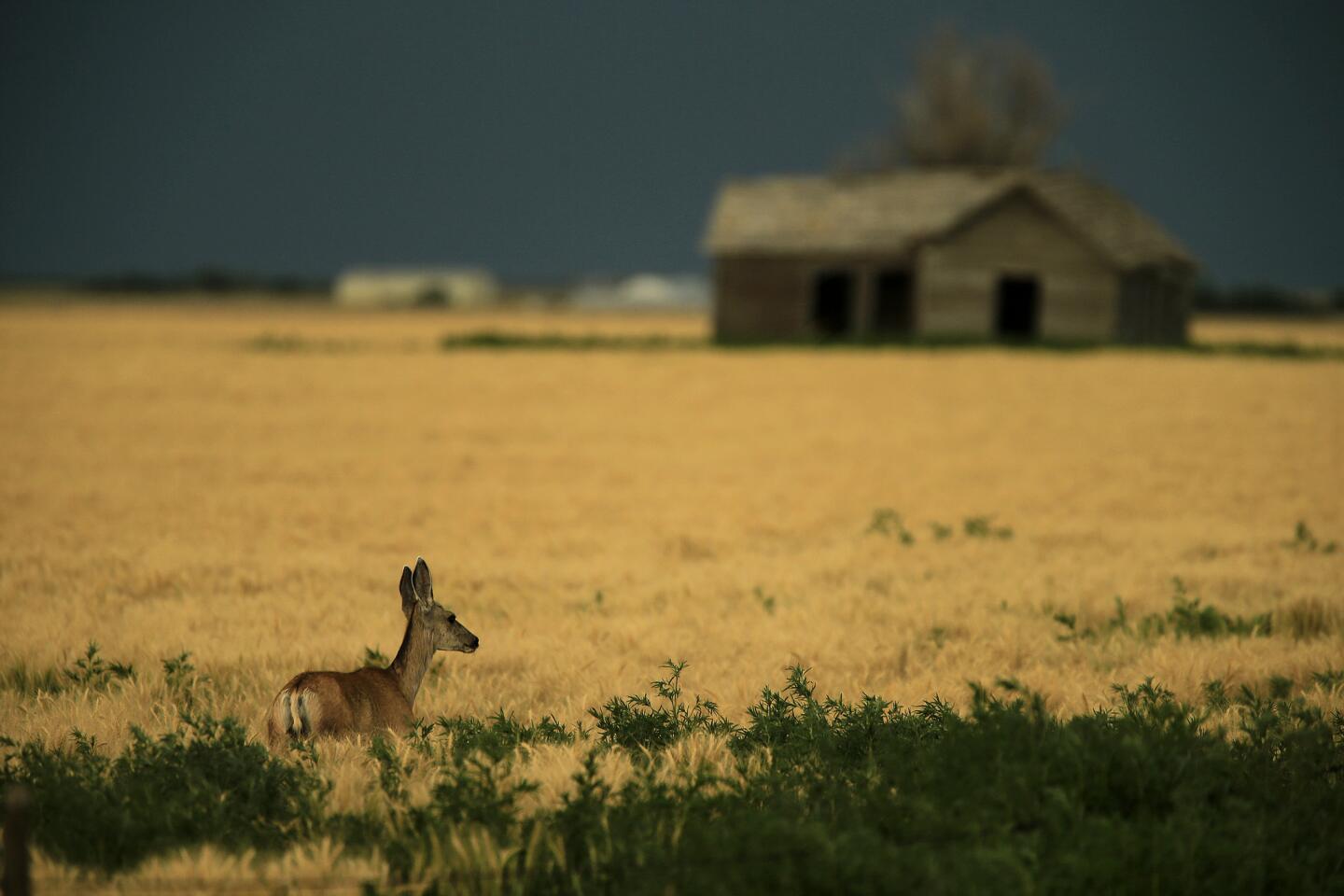
A deer looks across a field at sunset near Eads, Colo.
(Allen J. Schaben / Los Angeles Times)Advertisement
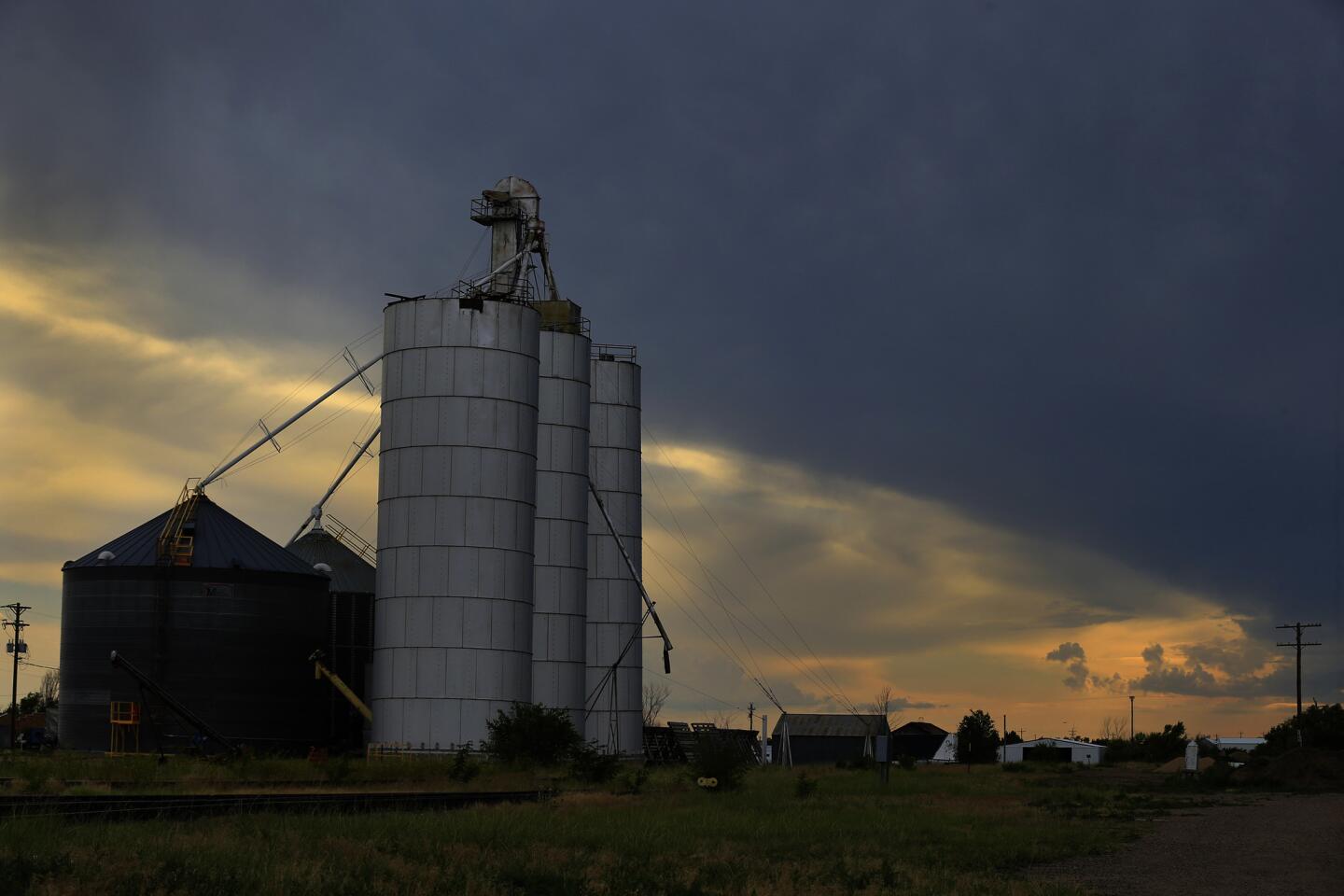
A grain elevator stands tall at sunset in Eads, Colo.
(Allen J. Schaben / Los Angeles Times)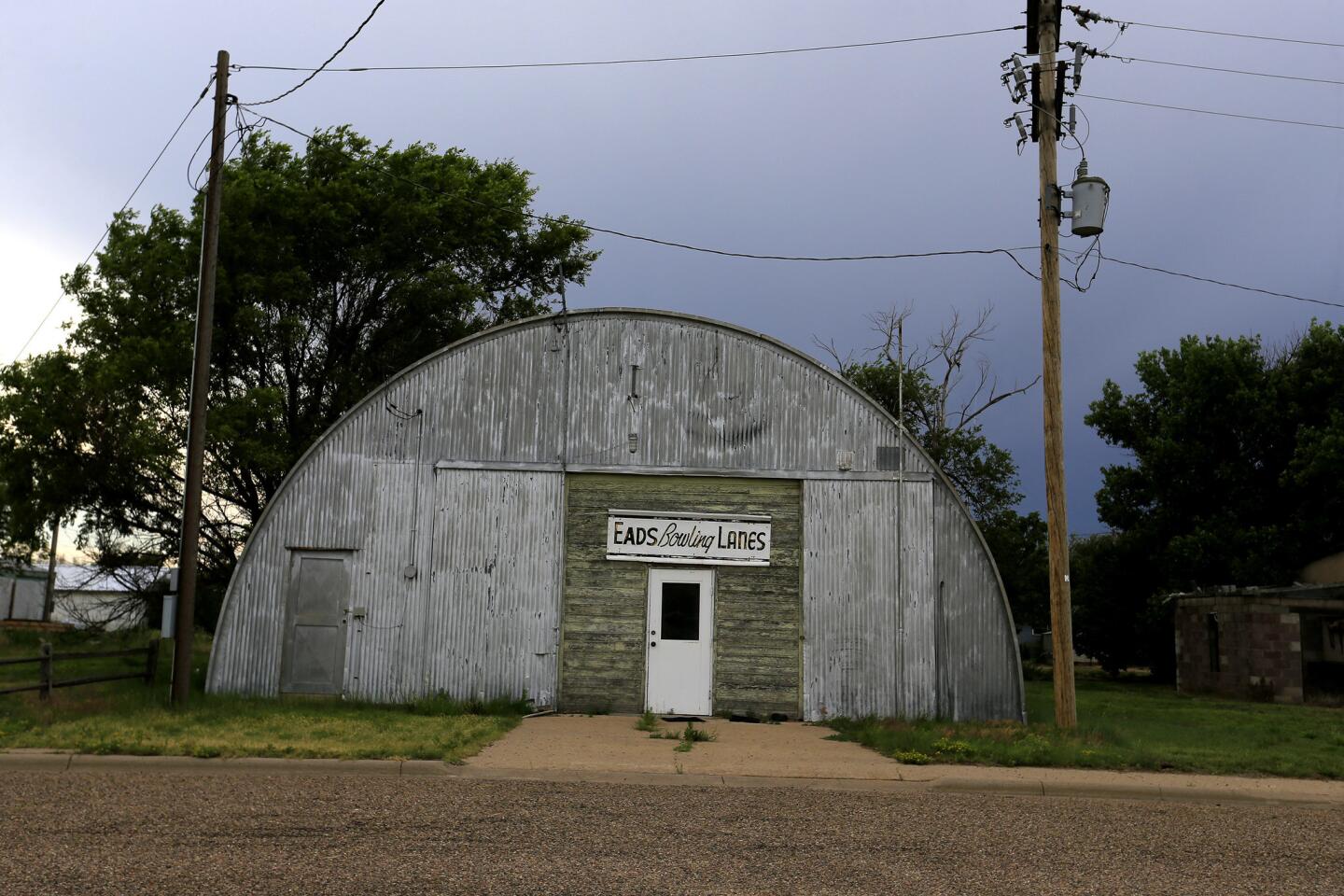
A view of the Eads Bowling Lanes in eastern Colorado.
(Allen J. Schaben / Los Angeles Times)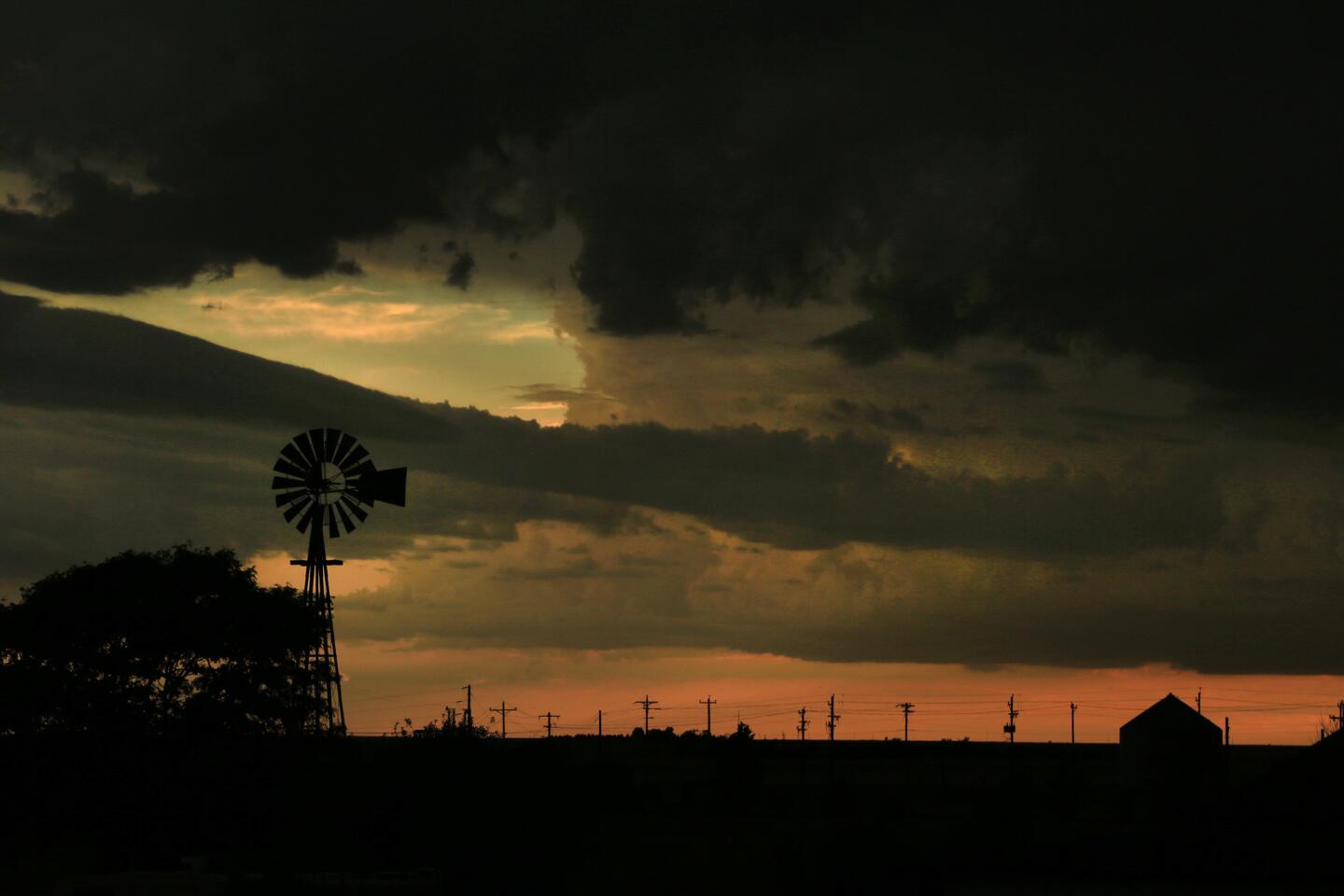
A windmill is silhouetted against the sky at sunset in Eads, Colo.
(Allen J. Schaben / Los Angeles Times)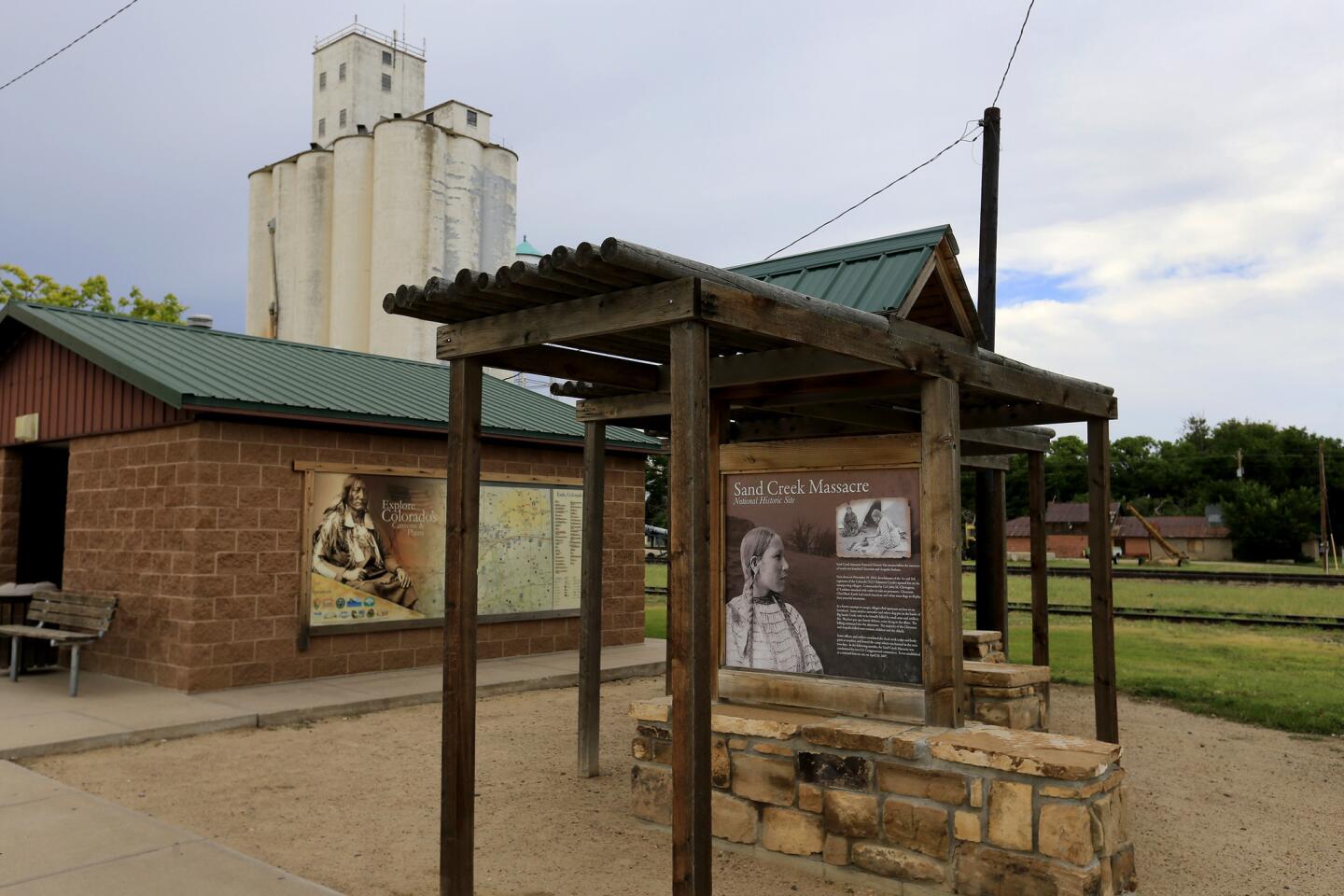
A public rest stop in Eads, Colo., has displays about the Sand Creek massacre and the historic site.
(Allen J. Schaben / Los Angeles Times)Advertisement
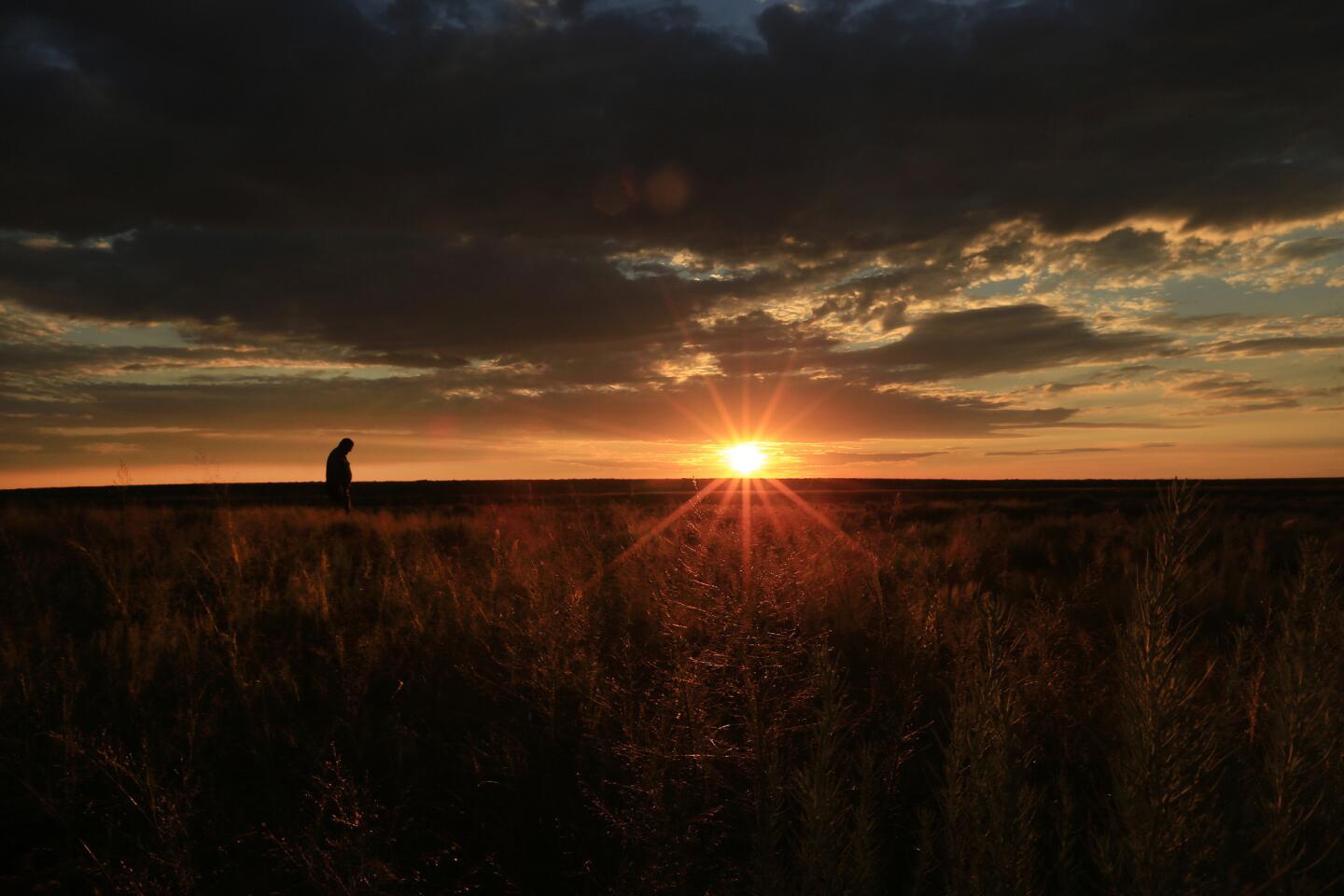
Sun rises over the area where hundreds of Native American people were slain, at the Sand Creek Massacre National Historic Site. (Allen J. Schaben / Los Angeles Times)



